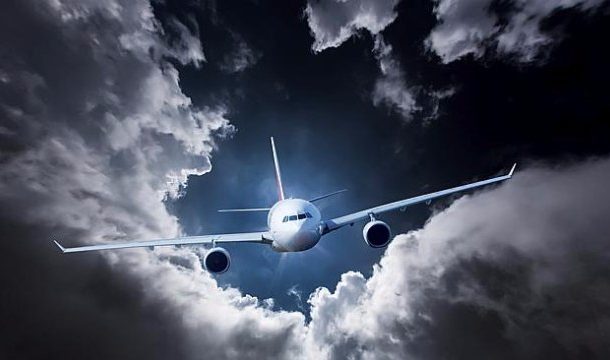Turbulence is the most common cause of injury to air passengers: in the US alone there are an estimated 58 injuries each year due to turbulence, and in extreme cases aircraft are forced to make emergency landings.
Pilots will always keep their seatbelts fastened while seated on an aircraft and will usually advise you to do the same. But is turbulence really something to be afraid of? British Airways pilot Steve Allright explains.
What causes turbulence?
Many different things may cause turbulence, but each and every one of them is known and understood by pilots. Every day I fly, I expect a small amount of turbulence, just as I’d expect the odd bump in the road on the drive to work. Turbulence is uncomfortable but not dangerous. It is part of flying, and is not to be feared.
Different aspects of the weather cause different types of turbulence. CAT is an abbreviation for Clear Air Turbulence – the most common form of turbulence you are likely to experience.
- What happens if you open the plane door during a flight?
- The real reason you're told you put your mobile in flight mode
Air tends to flow as a horizontal snaking river called a jet stream. A jet stream can sometimes be thousands of miles long but is usually only a few miles wide and deep. Depending on the direction of travel, our flight planners either avoid (into into a headwind) or use (into a tailwind) these jet streams to cut fuel costs, as they can flow up to 250 mph. Just like a fast-flowing river swirling against the riverbank, where the edge of the jet stream interacts with slower moving air, there may be some mixing of the air which causes turbulence.
Can it be avoided?
You cannot see CAT, you cannot detect it on radar, and you cannot accurately forecast it, but there are other ways of avoiding it. In the main we rely on reports from other aircraft, which we hear either directly or which are passed on by air traffic control. We then consider the options available to us. Our endeavours to fly at an altitude that has been reported as smooth may be prevented by several constraints such another aircraft occupying that level, or the weight of the aircraft at that time.
Whatever the circumstances, your pilot will find the most comfortable path to your destination without compromising your safety. Just like you, we experience the movement and would prefer a smoother ride.
Is turbulence more likely on certain routes?
Any airport is at the mercy of strong winds on any given day. The same applies to jet streams on any given route, although there is generally more chance of turbulence crossing the ITCZ (Intertropical Convergence Zone) when flying south across Africa, for example.
How bad can turbulence get?
Flight crews around the world share a common classification of turbulence: light, moderate and severe. The definitions are laid down in our manuals and help us to make an assessment as to what our course of action should be.
For the fearful flyer, even light turbulence can be upsetting. For pilots, light turbulence is no different to a bumpy road for a taxi driver or a slightly uneven section of track for a train driver – a small, but totally safe, inconvenience and very much part of our daily lives. In light turbulence, the aircraft may be deviating by just a few feet in altitude.
Moderate turbulence strikes no fear into pilots, as they will experience this level of turbulence for a few hours in every thousand hours they fly. It usually lasts for no more than 10 or 15 minutes, but occasionally may last for several hours, on and off.
This sort of turbulence will unsettle even some regular travellers and will cause drinks to spill. The aircraft may be deviating in altitude by 10 or 20 feet. No action is required by the pilot to control the aircraft, but the flight crew may decide to try a different altitude if the turbulence persists.
Severe turbulence is extremely rare. In a flying career of over 10,000 hours, I have experienced severe turbulence for about five minutes in total. It is extremely uncomfortable but not dangerous. The aircraft may be deviating in altitude by up to 100 feet (30 metres) or so, up as well as down, but nothing like the thousands of feet you hear some people talking about when it comes to turbulence.
I should stress that this level of turbulence is so rare that leisure travellers will almost certainly never experience it and nor will most business people.
Steve Allright is a British Airways training captain and co-author of the book Flying with Confidence. British Airways regularly runs "Flying with Confidence" courses at airport around the UK. Seeflyingwithconfidence.com
-telegraph.co.uk


Comments